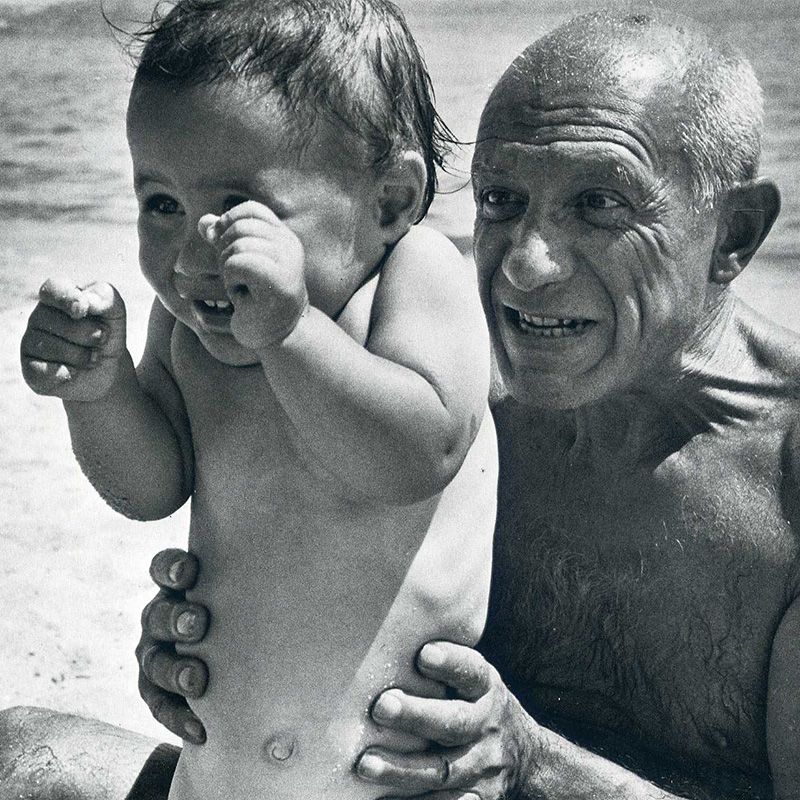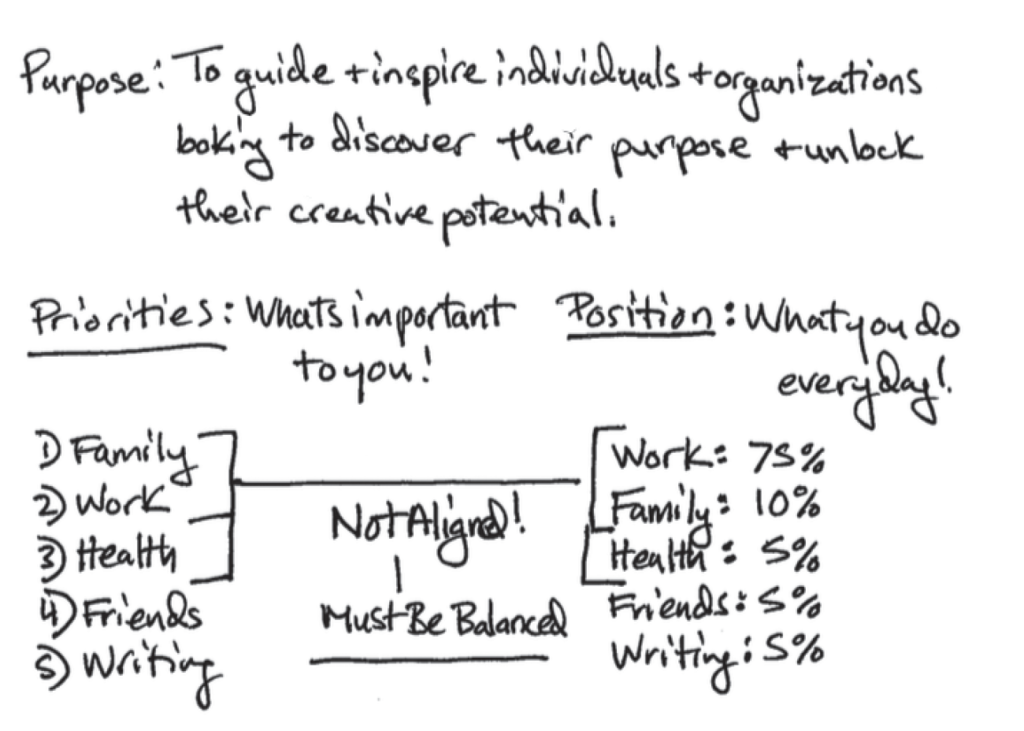
Podcast #10: Integrating Your Life w Picasso, Dali, & Dean Kamen
CLICK HERE TO LISTEN TO PODCAST
Velcro was invented in 1948 by Swiss engineer George de Mestral. The miracle material that makes it possible for children to close their sneakers without shoelaces was conceived when he went for a walk in the woods and wondered what he could learn from burrs. Nature made these seed cases prickly for protection and sticky to spread seeds, a combination that made them very difficult to clean off his trousers (and dogs). De Mestral realized he could apply the same design to a synthetic version for industrial use. After years of researching nature’s brilliance, he successfully reproduced this natural function by utilizing two strips of fabric—one side with thousands of minuscule hooks and the other with thousands of minuscule loops. The name Velcro came from a combination of two French words, velours and crochets (“velvet” and “hooks”), and it was formally patented in 1955.
Velcro is quite possibly the most famous example of biomimicry. This field of research and innovation is defined as “the design and production of materials, structures, and systems that are modeled on biological entities and processes.” Or, simply put, copying nature’s brilliance to find solutions to our problems.
When you understand biomimicry, it’s very much a why-didn’t-I-think-of-that? moment. It’s just so obvious. What hubris do we have, thinking our solutions will be more effective than those already in place in the natural world? Why should we know how to capture the sun’s energy better than a leaf? Or fly more efficiently than a bird? According to Janine Benyus of the Biomimicry Guild, “We are part of a brilliant planet…surrounded by genius. [Organisms] are doing things very similar to what we need to do. But they in fact are doing them in a way that have allowed them to live gracefully on this planet for [a very long time].”
Before humans started messing around with the system, nature existed in harmony for millions of years—a beautiful symphony of seasonal change, birth and death, creation and destruction. This same harmony that drives the natural world applies to the intangible, emotional world of humans. We, too, must achieve harmony between all the elements of our lives, between the internal self and the external world.
CLICK HERE TO LISTEN TO PODCAST
A harmonious state of being is defined as a state in which your internal needs are aligned with the actions you take and the surrounding energy of the world. The only way to create this harmony is by aligning your priorities with what you do every day. This harmony is vital to the manifestation of experienced creativity and flawless execution. To manifest your best work you must create an environment that nurtures and facilitates the focus of your time and energy. While “harmony” may sound very zen, you need to take an active role in manifesting this state of being: you must be intently aware of your own internal state and work tirelessly to remain in sync with your priorities and the world surrounding you.
Core aspects of your life or business that affect harmony are:
For individuals
– Work/School: Where you learn or create
– Home/Family: Who you live with and are related to
– Community/Friends: Who you choose to interact with
regularly
– Body/Mind/Spirit: The self
For organizations
– Finances: Revenues/Profits
– Employees/Partners: Key internal stakeholders
– Customers: Those you serve
– Global/Local Community: Surrounding entities you impact
When these key aspects of your existence are in harmony, you’ll create sustainable and fulfilling outputs that reflect your individual or organizational purpose, eventually unlocking your creative potential. To do this, to manifest your brand of experienced creativity, you must make decisions that benefit all or most of the areas of your life rather than just one or two.
Let’s review a simple example. You get an amazing job offer, but if you take it, you’ll have to work so much you’ll never see your family. This satisfies the work aspect of your life but puts it in direct opposition to your family. This lack of harmony eventually will manifest itself in a problem or blockage that prevents you from being able to create sustainably. For an organizational example, think of a company that’s generating record-setting profits or growth by espousing philanthropic beliefs—promising “one pair of shoes goes to charity for every one sold”—but isn’t actually following through with their charitable mission. Eventually, the truth will come out and the profits will slow down or stop altogether.
CLICK HERE TO LISTEN TO PODCAST
Sometimes, when we least expect it, energy moves like a tornado, in directions we don’t expect and that can feel negative. Our plan and harmony are disrupted, and then the question becomes, what do we do?
The natural reaction when something happens that’s unplanned is to panic or “fight the energy.” But that’s exactly the type of action you don’t want to take, because it’s in exact opposition to the harmony we’re aiming to achieve. So what can we do instead? There’s only one answer: accept it. Pause, take a deep breath, and trust that everything that happens is in your best interests.
This is really important. The key to achieving harmony and to manifesting your creative potential is to allow the surrounding energy to take you to where you need to be at that moment in time. You must trust the energy. Instead of fighting where the world is taking you, make an effort to understand why; look inside yourself to see the bigger picture. Maybe you lost a job because you’re supposed to move on from it. Or maybe a line of business is failing because you are supposed to shut it down. Maybe you didn’t get a house you put a bid on because you are not supposed to buy that house. We’re part of an energy system that’s much larger than ourselves, and sometimes we can’t understand the potential positive outcomes of things we perceive to be negative. We can’t understand how this situation is bringing us closer to our ideal reality. In those cases, it’s critical to accept that we aren’t always in control.
I know, I know; accepting a lack of control is counterintuitive and difficult—but when you realize that fighting the energy only creates chaos both personally and professionally, you’ll accept that existing in harmony with nature is the only solution. Or, as the great Roman emperor Marcus Aurelius said, “When force of circumstance upsets your equanimity, lose no time in recovering your self-control, and do not remain out of tune longer than you can help. Habitual recurrence to the harmony will increase your mastery of it.” Marcus Aurelius was, in his time, the most powerful man in the world; I promise you, his problems were greater than yours. If he can do it, so can you.
Achieving Integration
Happiness is when what you think, what you say, and what you do are in harmony.
—Mahatma Gandhi
CLICK HERE TO LISTEN TO PODCAST
The physical manifestation of harmony is integration. During the time of the industrial system, there was a clear separation for most people between what they did for a living and what they did in their free time. It was universally accepted that work was filled with struggle and sacrifice. The payoff was financial gain and, if you were lucky, a hint of passion on the weekends and leisure during your annual vacation.
The experienced creative, whether playing the role of employee or entrepreneur, must integrate their emotional needs with their everyday existence. And organizations must integrate the emotional needs of all stakeholders, employees, customers, and the surrounding community, into their business model. Dean Kamen, the famed inventor and scientist, tells a beautiful story about his father Jack that perfectly captures the idea of an experienced creative achieving integration:
My father was not one of those Leave it to Beaver fathers. After dinner all the other kids and the fathers would go out and play ball on the streets. My father would finish dinner and go upstairs to where he had his second studio and he would be working. And I was sitting there watching him. And I basically said to him, “Dad, you know I feel badly for you, because all the other fathers come home from work and they get to play with their kids, but you have to go back to work. He put down his brush and he said, “Dean, don’t ever feel sorry for me. I love what I do, I am an artist, I get to do something I love all the time. You need to find something that you love to do, and then you’ll be the lucky guy.”
Your time on earth is too short to give most of it to a pursuit without excitement or meaning. That means, as an experienced creative, you must serve your emotional needs within your everyday existence. Integration, or an integrated life, is the idea that all aspects of who you are—your home, your work, your community, and your mind/body—are merged into one harmonious state, making you your best self every day.
CLICK HERE TO LISTEN TO PODCAST
Practically, this means your life can’t be compartmentalized. You mustn’t make one-sided decisions. Instead, your decisions and actions must serve all your priorities, all the parts of what makes you who you are. For example, you can’t work late at the expense of your relationship with your family. You can only work late if it serves your relationship with your family by making you a more fulfilled individual. You may end up doing many of the same things, but the holistic impact of your actions matters. When you intend to achieve the unbelievable and sustain a fulfilling existence, you can’t have fun on Saturdays and be miserable on Mondays; you can’t flourish financially but have miserable employees. All aspects of your existence must be served, and all elements must be integrated.
We’re all artists, and artists aren’t only artists on the weekends; they’re artists all the time. You wouldn’t stop Picasso or Dali to say it’s eight p.m., time to turn off the art and go home. Being an artist, an experienced creative, means you’re in touch with your inner purpose, and you don’t put it away. Whether parenting, working, making dinner, or sharing your art, you must be like an artist and serve your inner purpose. When you aren’t sharing yourself in some meaningful way, you end up cheating yourself and diluting your work. As bestselling author Dr. Brené Brown puts it, “Authenticity is the daily practice of letting go of who we think we’re supposed to be and embracing who we are.” Your highest art can only be manifested when you achieve integration, when you can always exist as your best self.
For example, when someone cheats in a relationship, most of the time they aren’t taking that action because they’re a bad person; they do it because they’re not getting something they need from within that relationship. Once a persistent “lack” manifests, the individual looks to satisfy that need elsewhere. That’s a function of the internal self. The same problem applies in all situations: if you don’t serve your internal need to manifest your greater purpose, it will continue to attempt to find its way out. It’s what we do as humans; it’s innate. Achieving integration—a life that serves all the aspects of who you are or an organization that serves all its stakeholders—creates a positive force in the world and a fertile breeding ground for happiness, fulfillment, and realization of your definition of success.
CLICK HERE TO LISTEN TO PODCAST
Imagine that: being in your zone, in your flow, enjoying all your daily experiences fully and being in complete harmony with your environment. Dean Kamen’s father wasn’t working; he was playing. By living a life that served his purpose, he existed beautifully, carried by the wave of his life.
Integrating Exercise #1: Aligning the 3 P’s
Do the following simple exercise to assess the level of integration in your life. It’s called aligning your 3 P’s: purpose, priority, and position.
Purpose: The reason for which something exists. As we’ve discussed, it is the WHY behind everything you do, what drives you, what makes you different. It’s your essence.
Priority: The relative importance an individual or organization places on various tasks and activities, both short and long term.
Position: What an individual or organization spends every day doing, whether selling carpets or playing soccer.
On a piece of paper, write out your purpose, and then, in one column, write down how you spend your time, e.g., work/school; home/family; community/friends; and body/mind/spirit. (If you’re doing this for a business, use the organizational aspects.) Next to each one, assign a percentage out of 100, based on the amount of time they occupy in your life. For example, 30 percent work, 45 percent home, 10 percent community, and 15 percent mind/body. Then, in the adjacent column, assign a 1-5 priority of importance. For example: 1) family, 2) work 3) friends 4) health 5) writing.

Take a step back and look at the chart. The closer you are to spending the majority of your time on your highest priorities, the closer you are to being aligned and achieving an integration. Does what you do every day align with the things you claim are most important to you? Are they aligned with your purpose?
CLICK HERE TO LISTEN TO PODCAST
If not, don’t get down on yourself; achieving harmony is a lifelong process. The idea is to understand what you’re trying to manifest and then take steps every day to get closer to that goal. When you realize this goal, your internal and external worlds become one, providing you greater strength than you could ever imagine.
The Power of Integration
I think Dean Kamen summarizes the desired result of integration quite well:
“I tell every kid I meet, fi gure out something you really love to do. Get so good at it that you can make a living doing it. If you don’t do that, you’re cheating yourself out of a happy, meaningful life.” In other words, do what you love, find a way to make money doing it, and positively impact others so it gives your life meaning. Sounds simple, doesn’t it? It is. Don’t waste your life: learn who you are and what makes you special, and then integrate the things you care about into a meaningful and fulfi lling existence.
CLICK HERE TO LISTEN TO PODCAST

